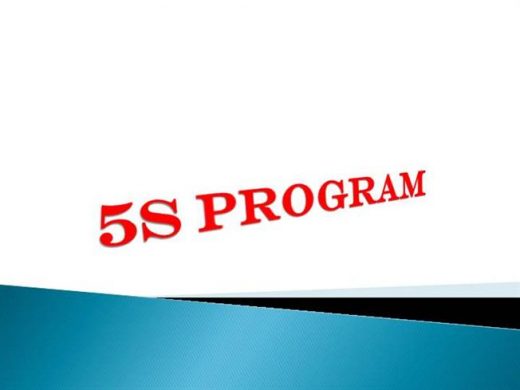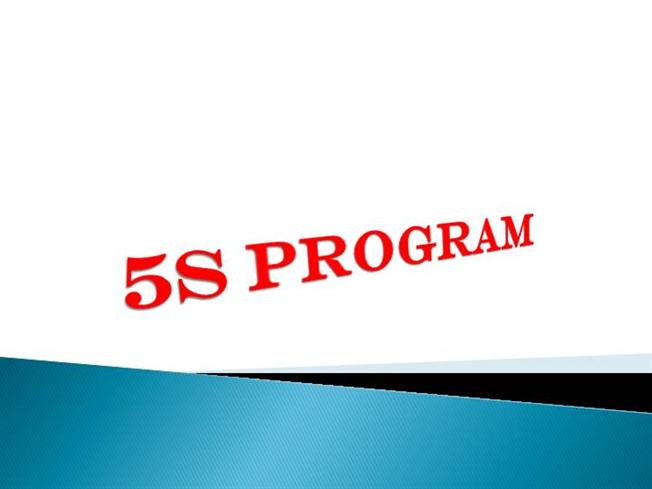Visual Management & The 5S Program: Improving Workflows
June 16, 2016

The 5S program is an extension of lean management and a way to “clean house” in the workplace, making it a great way to promote efficiency when it comes to manufacturing & distribution. The 5S program serves as a foundation for sustaining continuous improvement by exposing some of the most visible examples of waste in the supply chain, also opening up opportunities to improve workflows using visual management. Let’s take a close look at these concepts: The 5S Program and Visual Management.
What is the 5S Program?
The program is named after the 5 steps (all beginning with “S”) that a company needs to take when following a lean strategy. Depending on the industry, the words may differ, but the concepts are always the same.
- Sort: The first step in 5S is to remove all items from the workplace that aren’t considered “necessary.” This involves a two-part process where employees can red tag items they feel are nonessentials and move them to a designated area. Management will then make the final decision.
- Set in Order: Organize what is left from the sort in a way that streamlines workflow. Items should be placed as close to the point of use as possible, with any necessary visuals posted.
- Scrub: A clean workplace should be maintained at all times. Sticking to the 5S Program is impossible in a dirty or cluttered environment.
- Standardize: This is the step where you take everything you learned from the beginning of 5S and create rules to keep them in place. Standards must be known, practiced, and visible, at all times. Without standardization, there would be no way to create accountability, and the program would fail.
- Sustain and Systemize: This step requires continual improvement. Although 5S may begin as an event, it is a daily process in manufacturing & distribution. A visual workplace keeps standards in the forefront of the environment, which encourages sustainability.
Overcoming Workflow Challenges with Visual Management Techniques
One of the best ways to overcome workflow challenges in manufacturing & distribution is by creating a “visual workplace.” A visual workplace is an environment that is the goal and result of conducting a streamlined 5S program, putting critical information at the immediate point of need. It serves as the key force in sustaining initiatives by displaying necessary information at all points of action.
1. Safety
One of the target outcomes of 5S and a visual workplace is safety. This involves alerting people to potentially hazardous situations and preventing unsafe conditions through the use of signage. The following are a few ways to improve safety through visual management:
- Hazard warnings and safety instructions are placed at the point of need.
- Emergency stations are clearly marked.
- Protective equipment is easy to access and used at all times.
2. Quality
Visual management will improve quality by reducing variability in the 5S process. Some ways to use visuals to improve quality include:
- Posted examples of acceptable and unacceptable output for easy comparison.
- Quality performance trends visually displayed in a common area.
- Signs marked with the quality standards and expectations clearly visible at all workstations.
3. Time
When a proper 5S program is implemented, workers have more time to perform value-added tasks. A lean management plan with valuable data can help forecast where time management can be improved. A visual environment provides the convenience of immediate information, which keeps employees from having to search for, create, or guess, when doing their job.
4. Waste
Employees who lack the proper training or knowledge to do their jobs efficiently, will waste valuable time searching, waiting, and reworking. A visual workplace immediately eliminates questions, which increases productivity, quality, and customer satisfaction.
5. Morale
Team members that are involved throughout the process are motivated and engaged. When people see they can make a difference, they are the biggest vehicles for change. Posting success stories from the 5S program in common areas is a great way to boost overall morale. Creating a visual environment of encouragement motivates employees to continue the 5S process with continual improvements. Small rewards for small improvements can ensure long-term success.
Understanding how these proven theories operate, and applying them to your business model, will ensure an increase in performance and ROI. Establishing standards and practicing continuous improvement will help solve some of your biggest workflow problems.
Business & Finance Articles on Business 2 Community
(39)



